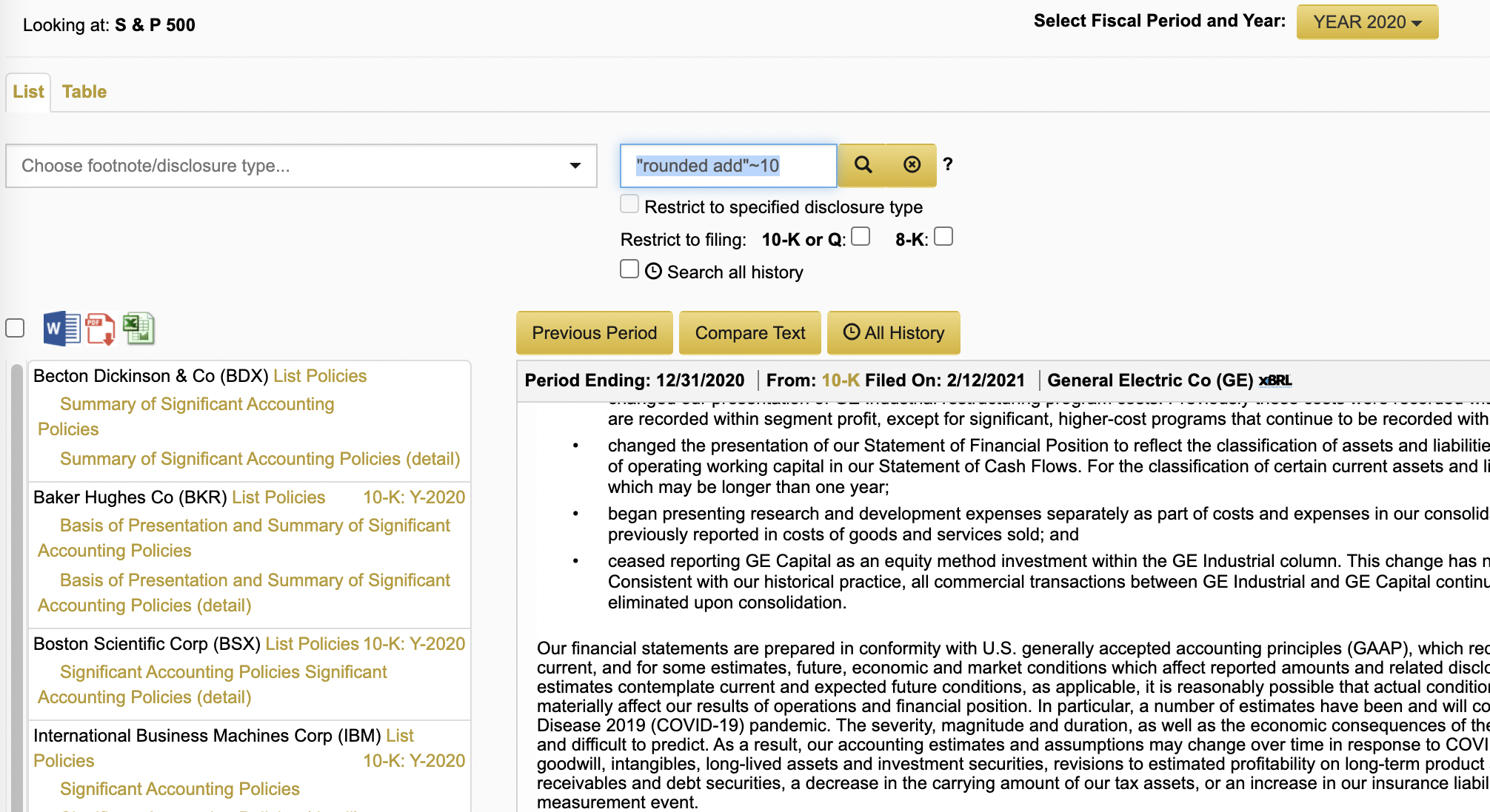The other day we were reading the latest from Calcbench columnist Jason Voss, where he was constructing his own statement of cash flows from General Electric’s ($GE) other financial statements.
We saw that Voss’s column included this line: “Note that GE’s numbers are occasionally a tiny bit off, because the firm rounds the numbers it reports.”
Well that’s intriguing, we thought. The discrepancies due to rounding never add up to anything material, but precision still matters in financial analysis. If nothing else, an analyst might notice those discrepancies in whatever model you’re using, and start poking through Excel formulas to identify where you might have made a mistake — when there was no mistake at all; the firm was just rounding.
For example, GE itself says this in its disclosure of accounting policies:
We have reclassified certain prior-year amounts to conform to the current-year’s presentation. Unless otherwise noted, tables are presented in U.S. dollars in millions. Certain columns and rows may not add due to the use of rounded numbers.
So how many other firms out there use rounding to the point that sometimes numbers don’t add up nice and neatly?
To find the answer, a person only needs to enter a clever search string in our Interactive Disclosures database. Just select the firms you want to study, go to the text search field, and enter "rounded add"~10. (Yes, the “rounded add” should be in quotes that go right into the search box.)
That will search for the words “rounded” and “add” within 10 words of each other. See Figure 1, below.

We searched that string for the S&P 500’s 2020 reports, and nearly two dozen companies that mentioned their columns may not always add up due to rounding — businesses ranging from IBM ($IBM) to Baker Hughes ($BKR) to Becton Dickinson ($BDX), and others.
What can an analyst do with this information? First, you can put aside any fears that you’re crazy: the numbers really don’t add up; it’s not a flaw in your Excel formulas.
Second, we also offered this example to show how a Calcbench user can perform more complex text searches in a company’s footnotes. Whenever you want to search for two keywords in proximity to each other, just use that structure we offered earlier: the two words in quotes, followed by the ~ symbol and then whatever number you want to use. (We recommend 10 since that’s enough to capture complex sentence structure, but not so large that you start to get useless results.)
Just another way Calcbench tries to be helpful to our users. Go forth and analyze!